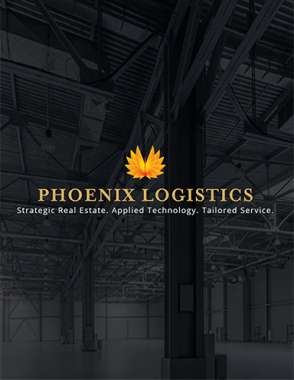How Much Longer Will Supply Chain Disruptions Last?

The level of disruption experienced along the global supply chain in the past few years has made terms like “supply chain” and “logistics” into household words and topics of dinner table conversation.
The Modern Global Supply Chain
The fragility of the modern global supply chain began to reveal itself in 2018 once a trade war with China - the United States’ largest trading partner - began to heat up.
Back-and-forth retaliatory tariffs over the next two years revealed how dependent the U.S. was on Chinese imports, ranging from raw materials like steel to more complex technologies, such as microchips.
On the heels of that trade war came the pandemic, which made accessing overseas trading partners not just expensive - but often impossible.
Now in its third year, COVID-19 has become less threatening to vaccinated members of the U.S. population, enabling a slow return to normalcy. Consumers are returning to retail stores, though many still shop online. Shoppers have gone back to the grocery store, though online grocery ordering and delivery are also here to stay. Many businesses that had gone remote have begun returning to their offices in some capacity. Retailers and manufacturers alike seek to shorten their supply chains and mitigate ongoing disruptions. Yet, the disruptions keep coming.
Why Is The Supply Chain Still Disrupted?
Five years ago, few people outside of supply chain, logistics, and procurement knew what those words really meant. However, the level of disruption experienced along the global supply chain in the past few years has made terms like “supply chain” and “logistics” into household words and topics of dinner table conversation. On some level, every consumer is now a supply chain stakeholder of a sort, and stakeholders at every level of the supply chain - from dinner table conversationalists to supply chain professionals - all want to know the same thing: why is this still happening?
The short answer is that the global supply chain experienced a perfect storm of disruptive forces, many of which continue today. Some of these include:
- Labor shortages at trucking firms, warehouses, factories, and ports
- Just-in-time inventory management practices that make disruption response challenging
- Port backlogs that make it difficult to access raw materials and finished goods from overseas
- Slow adoption of visibility technologies that can help mitigate risk
- Overwhelming consumer demand for e-commerce goods
- Shortages of industrial real estate in critical markets
- Unpredictable weather events that disrupt cargo flows
- Shipping container shortages that make moving international cargo difficult
- Capacity crunches in all modes of transportation
These and numerous other factors continue to mesh together and form a volatile supply chain environment for businesses and consumers alike. Eventually, the supply chain should stabilize. But when?
How Long Until Supply Chain Disruptions Ease Up?
The changes in logistics, procurement, and supply chain environments have been so drastic that it will take time for practitioners in these areas to adapt. As a result, experts have modified predictions to show that we can expect supply chain disruptions through late 2023 at best.
However, the supply chain has made significant advances in automation and visibility technologies and continues to develop new best practices for operating in volatile global markets. Signs of a more resilient supply chain have begun to emerge, such as:
- Businesses carrying safety stock as a best practice
- Companies reshoring manufacturing to U.S. soil
- Automation technologies that enhance the capabilities of smaller labor forces in warehouses/factories
- Bipartisan infrastructure spending by the U.S. government to shore up highways, ports, and connectivity
These signs show that the U.S. continues to move toward recovery, though perhaps not as fast as many companies, shoppers, or logisticians would like. Challenges with labor availability, transportation capacity, and reliable supplier sourcing will likely continue to trip up recovery efforts through this year and into next.
Businesses struggling to adapt to the rapid pace of change in today’s unpredictable supply chain environment would do well to enlist help from an experienced third-party logistics (3PL) partner. A 3PL can help ease many of the burdens caused by supply chain disruption.
About Phoenix Logistics
Strategic Real Estate. Applied Technology. Tailored Service. Creativity. Flexibility. These fundamentals reflect everything we do at Phoenix Logistics. We provide specialized support in locating and attaining the correct logistics solutions for every client we serve. Most logistic competitors work to win 3PL contracts, and then attempt to secure the real estate to support it. As an affiliate of giant industrial real estate firm Phoenix Investors, founded by Frank P. Crivello, we can quickly secure real estate solutions across its portfolio or leverage its market and financial strength to quickly source and acquire real estate to meet our client’s needs.
Article Topics
Phoenix Logistics News & Resources
4 Best Practices for Online Order Fulfillment In 2023 Is Industrial Real Estate Recession-Proof? 9 Tips for Offsetting Rising Parcel Rates Tips for Retaining Your Peak Season Temp Labor The Great Decoupling and What It Means for Industrial Real Estate How Does the Inflation Reduction Act Impact Industrial Real Estate? Not in My Backyard: Warehouse Edition More Phoenix LogisticsLatest in Supply Chain
April Employment Update: Trucking Sector Faces 300 Job Losses Porsche Gets Greener, Shifts to Sustainable Transport Logistics How Much Will it Cost to Repair Baltimore’s Francis Scott Key Bridge? Retailers Take Lead in Big-Box Warehouse Leasing, CBRE Finds Trucking Industry Pushes Back on Government’s Electric Mandates Senators Take Aim at Amazon with Warehouse Worker Protection Act Maersk Sees Silver Lining in Red Sea Shipping Challenges More Supply Chain













